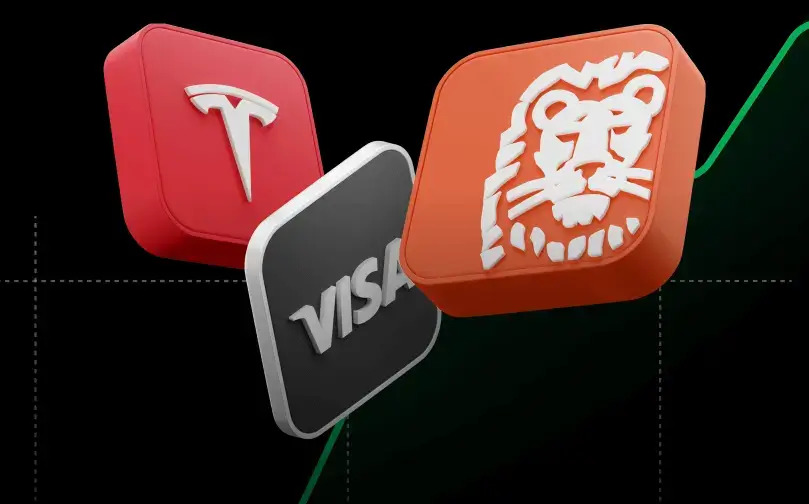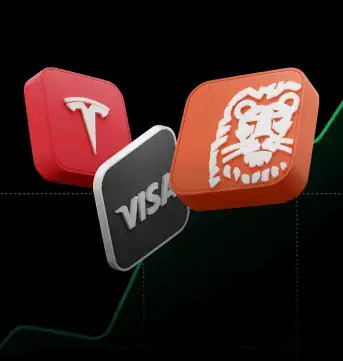Walmart beat earnings expectations and posted revenue of $173.4bn, up 5.7%, for the fourth quarter, as US consumers showed their might during last year’s holiday season. Earnings per share were also higher than expected, rising to $1.80, vs. $1.64 expected. Sales growth was impressive – up 4% in the three months that ended in late January, and global ecommerce sales also surged by 23%, while US ecommerce sales rose by 17%. In other encouraging news, losses at Walmart’ online business are slowing, and there has been an increase in demand for its delivery services.
US consumer shops more often, but spends less
Walmart is the US’s larges retailer, so it can give us a valuable insight into consumer trends. The number of transactions at Walmart rose by 4.3% in the previous quarter, however, the average ticket value fell by 0.3%. This suggests that consumers in the US are buying more things, but they are spending slightly less. This is not a sign of disinflation, according to Walmart, which suggests that the US consumer is getting slightly cautious and trading down to cheaper brands of goods.
The cautious US consumer may not be a reason to panic, however, it is why Walmart issued softer than expected guidance for the rest of this year. Walmart is forecasting consolidated net sales growth to rise by 4-5% this year, which is slower than recent quarters. Consolidated operating income is forecast to register growth of 3-4.5%, this year’s full year adjusted EPS is expected to be $6.70 to $7.12, which is a wide range, and the lower end of this range is well below the estimate of $7.09. Thus, while the headline earnings for the last quarter are stronger than expected, there are some cracks appearing in Walmart’s future outlook.
Walmart boosts dividend, as trend for corporate sweeteners continues
After announcing a stock split earlier this year, it has also boosted its dividend by 9%, which is part of a broader trend this earnings season to giveaway sweeteners to shareholders. There was also some takeover news, Walmart announced that it had spent $2.3bn buying Vizio, the smart TV marker. The move into owning an electrical goods maker could boost its advertising business, Walmart Connect. This is important, since Walmart’s nonretail businesses tend to have faster growth and higher margins, which is a mix that shareholders like.
Overall, Walmart is still a behemoth in US retail, and it is gaining market share in nearly every category. It also made an interesting observation about inflation: it does not expect deflation any time soon based on what has been seen in its supply chain. This could further knock expectations of rate hikes from the Fed in the near term, and right now the first-rate cuts are expected around June and there are just under 4 rate cuts expected this year.
Walmart’s share price hits a record in sign of confidence in US consumer
The market is looking through softer guidance and focusing on the good news in Walmart’s results. Its stock price is higher by 4.4% in the pre-market. A dividend, a move into a retail business that could help its non-retail advertising business, and better than expected results for the last quarter, create an alchemy that is rewarded by financial markets. Walmart’s share price is at a record high, which is a sign that financial markets still have faith in the US consumer, even though interest rate cuts from the Federal Reserve have been scaled back.
Eurozone wage growth moderates, but not by enough
Elsewhere, the ECB released its quarterly wage growth index for the currency bloc. Negotiated wages rose by 4.5% in Q4, down from the 4.7% rate in Q3, which was a record high, however, this is well above the ECB’s target rate for inflation of 2%. The ECB, including president Lagarde, have sounded warnings about wage inflation, and the Q4 data is unlikely to assuage their fears. This is why the EUR/USD has popped above 1.08 and is at its highest level since the start of February. European stocks are a mixed bag on Tuesday, although the moves have been mild so far, and German bond yields are also mostly flat, after rising to their highest level since early December. The euro may rise further, since the wage data has already caused a recalibration in Eurozone rate expectations. Earlier this week, the market expected the first rate cut from the ECB around April, this has now been pushed back to June, in line with the Federal Reserve. This could drive EUR/GBP back to the 0.86 level from mid-January, and EUR/USD back towards 1.0880, the high from 1st Feb.
US OPEN: US500 tests record highs as technology sector leads gains
DE40: Regulatory and diplomatic escalations amid holidays
Novo Nordisk - There Were Risks, Now It's Time for Opportunities.
US OPEN: Renewed optimism at the beginning of the week
The content of this report has been created by XTB S.A., with its registered office in Warsaw, at Prosta 67, 00-838 Warsaw, Poland, (KRS number 0000217580) and supervised by Polish Supervision Authority ( No. DDM-M-4021-57-1/2005). This material is a marketing communication within the meaning of Art. 24 (3) of Directive 2014/65/EU of the European Parliament and of the Council of 15 May 2014 on markets in financial instruments and amending Directive 2002/92/EC and Directive 2011/61/EU (MiFID II). Marketing communication is not an investment recommendation or information recommending or suggesting an investment strategy within the meaning of Regulation (EU) No 596/2014 of the European Parliament and of the Council of 16 April 2014 on market abuse (market abuse regulation) and repealing Directive 2003/6/EC of the European Parliament and of the Council and Commission Directives 2003/124/EC, 2003/125/EC and 2004/72/EC and Commission Delegated Regulation (EU) 2016/958 of 9 March 2016 supplementing Regulation (EU) No 596/2014 of the European Parliament and of the Council with regard to regulatory technical standards for the technical arrangements for objective presentation of investment recommendations or other information recommending or suggesting an investment strategy and for disclosure of particular interests or indications of conflicts of interest or any other advice, including in the area of investment advisory, within the meaning of the Trading in Financial Instruments Act of 29 July 2005 (i.e. Journal of Laws 2019, item 875, as amended). The marketing communication is prepared with the highest diligence, objectivity, presents the facts known to the author on the date of preparation and is devoid of any evaluation elements. The marketing communication is prepared without considering the client’s needs, his individual financial situation and does not present any investment strategy in any way. The marketing communication does not constitute an offer of sale, offering, subscription, invitation to purchase, advertisement or promotion of any financial instruments. XTB S.A. is not liable for any client’s actions or omissions, in particular for the acquisition or disposal of financial instruments, undertaken on the basis of the information contained in this marketing communication. In the event that the marketing communication contains any information about any results regarding the financial instruments indicated therein, these do not constitute any guarantee or forecast regarding the future results.


